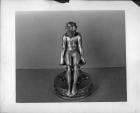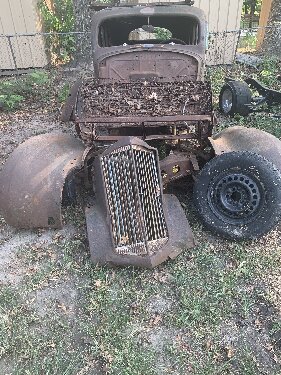|
Re: A Warning
|
||||
|---|---|---|---|---|
|
Webmaster
|
-TOPIC MOVED TO PRE-WAR FORUM-
Posted on: 2023/6/16 12:43
|
|||
|
-BigKev
1954 Packard Clipper Deluxe Touring Sedan -> Registry | Project Blog 1937 Packard 115-C Convertible Coupe -> Registry | Project Blog |
||||
|
||||
|
Re: A Warning
|
||||
|---|---|---|---|---|
|
Webmaster
|
It can happen if a siphon effect gets created.
When I got my '54 towed home, it was pulled rear-first onto the flatbed ramp truck. At which time, the remains of 20-year-old (and stinky) fuel poured out the front rotten fuel hose and down the ramp truck ned and over the hot muffler. Let's just say the truck driver was not amused.
Posted on: 2023/6/16 12:48
|
|||
|
-BigKev
1954 Packard Clipper Deluxe Touring Sedan -> Registry | Project Blog 1937 Packard 115-C Convertible Coupe -> Registry | Project Blog |
||||
|
||||
|
Re: A Warning
|
||||
|---|---|---|---|---|
|
Home away from home
|
To this issue, is there a tool like there is for a modern radiator that you can plug into the gas tank filler neck and pump up? It would need a gauge to show any leaks. (Mine has internal ears to hold the cap so is not a smooth bore for a normal rubber stopper)
It would be very advantageous to be sure that the system is tight BEFORE adding fuel to a rebuilt system. Areas like double flare joints at the sender unit and the fuel pump flex line, and the aforementioned gaskets and diaphragms may not be fuel tight and this way you would know before charging the system with gasoline. It would allow you to paint the joints with soapy water like on a propane tank coupling. Maybe you remove the filler neck and insert this tester in the gas tank neck to get a simpler ID seal? Bob J.
Posted on: 2023/6/16 13:44
|
|||
|
||||
|
Re: A Warning
|
||||
|---|---|---|---|---|
|
Home away from home
|
I used a clean rag and an air blow gun to apply limited pressure to the gas tank to check for leaks, and then to prime the system. Pressure must be kept very low to avoid wrecking the gas tank. A slightly damp rag would prevent static electric sparks.
A fixture to apply pressure at about 1 PSI would be handy, since you could then hold light pressure on the system and crawl around looking for any leaks. It might be possible to clamp a short length of radiator hose to the outside of the gas filler pipe and then make up a fixture to insert into the hose. It's very important to keep pressure very low. An air line fixture with a second, larger line for a vent placed in a bucket of water to a depth of a foot or so would provide a safety pressure release when used with a very low volume pressure line. Any significant pressure or vacuuum will damage the tank.
Posted on: 2023/6/16 18:43
|
|||
|
||||








